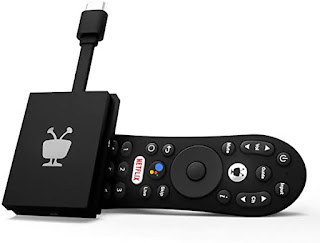Most of the support Websites concerning streaming and traveling offer suggestions about using a Firestick or a Roku Stick. The reason is that those devices are small and easy to pack. And, to my understanding, the Firestick is the easiest to use when it comes to setting up a streaming device in a hotel.
The problem is that many hotels force you to agree to terms when you connect to their WiFi. With Roku devices, you have to have a computer or smart phone to complete the process. It's a little more complicated and not as easy as a Firestick, according to my understanding, but both work well.
If you have a Roku device, you can use any current model. All the current Roku devices support this functionality. Firestick has supported this longer, and most people like it better.
If you're a Chromecast user, if the hotel uses a Web page agreement setup, you can't connect. Same with Apple TV. You're pretty much limited to Firestick or Roku for connecting to hotel WiFi.
Which do I use? Neither. When I go on vacation, I don't carry a streaming device with me. It's not what I want to do on vacation. I want to focus on where I am, who I'm with, and what we're doing. None of that means a streaming device.
Of course, it may be the perfect thing for you when you are traveling. Vacation and traveling aren't the same thing. Some travel for work, or short trips for personal that really isn't a vacation. I get that. But, I'm fortunate enough that I haven't been in that situation. Or unfortunate enough. Either way, since the situation doesn't apply to me, I've not made a priority of doing it, so I haven't done it.
But, I do know that if I was a Roku or Amazon Firestick user, I'd be comfortable taking one. If I was all-in on a different device, I'd want to pick up a Firestick or Roku for travel.
Sure, there are travel routers and such that make this easier, but the easiest thing for Firestick or Roku users is to simply pack a device and take it with you.
Don't forget the remote. You will need the remote. If you use a smartphone app to control your device, you'll still need the remote. Trust me on this. Or don't and find out the hard way. You can't use the smartphone app until you're connected to the network. And you can't connect to the network without a remote.
If you want to stream while traveling, there are only a couple of good options, but those that use them are happy with them. Whatever your preference, do what you need to make your Streaming Life an easy one.






